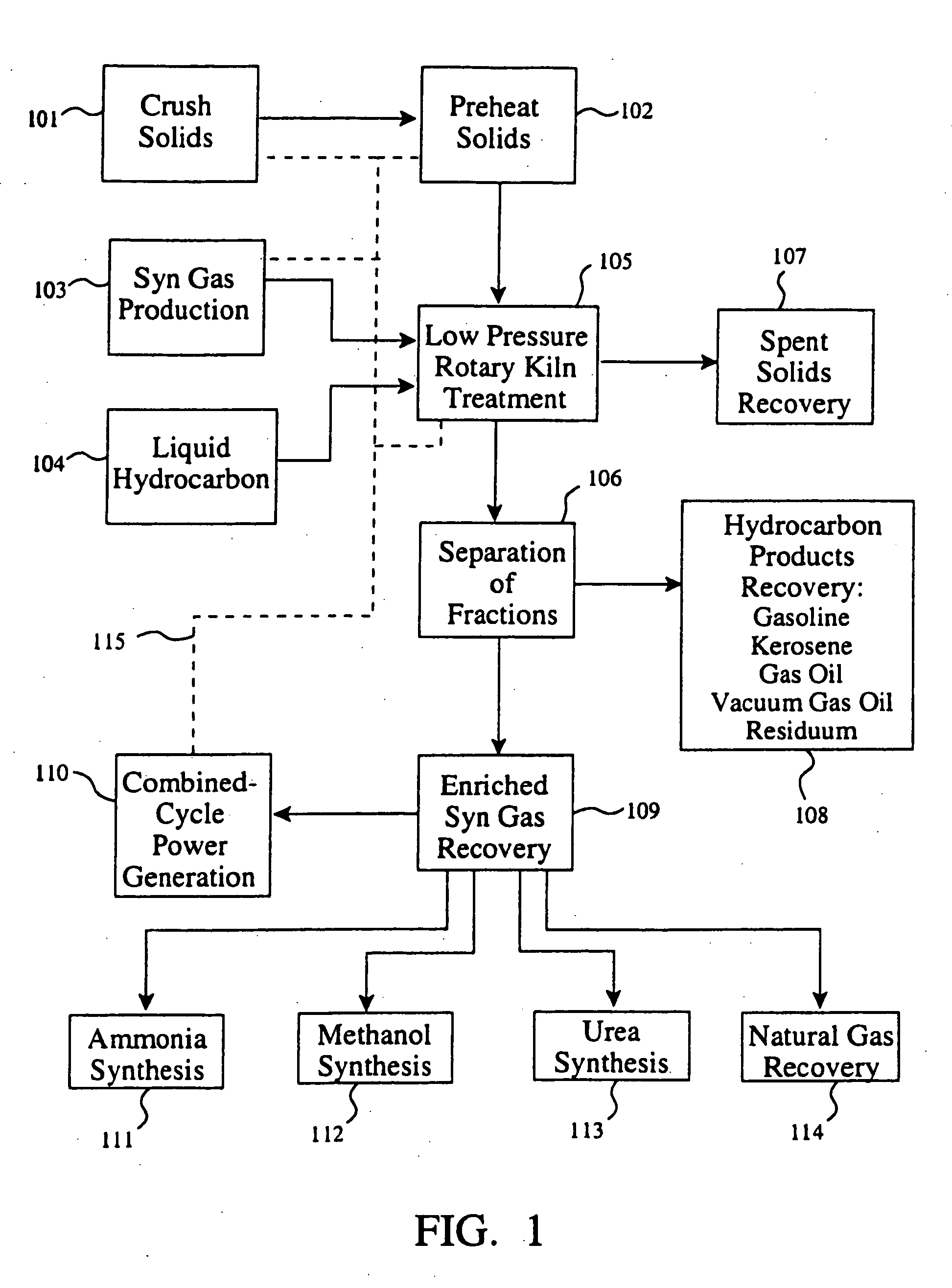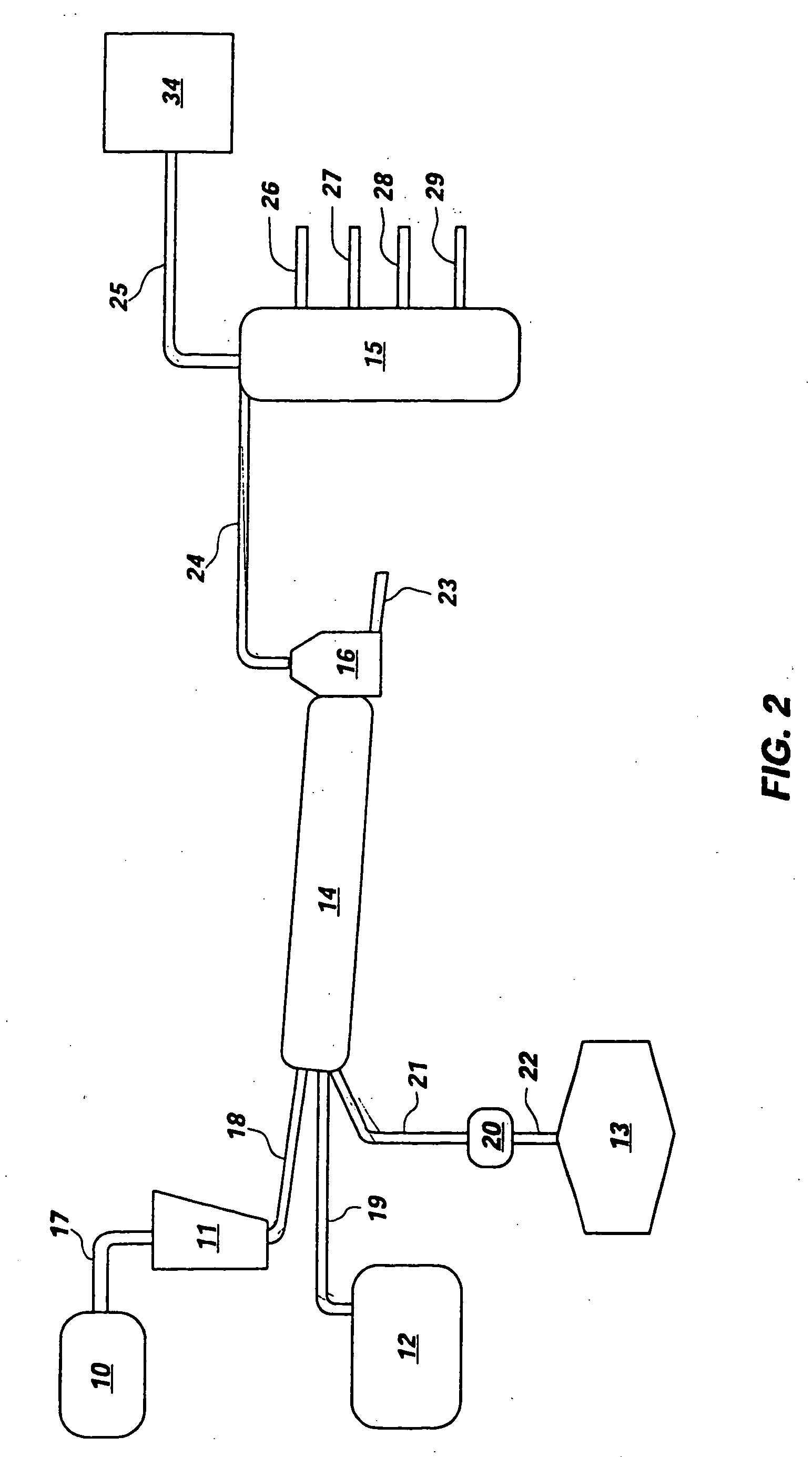Process for the recovery of hydrocarbon fractions from hydrocarbonaceous solids
a hydrocarbonaceous solids and hydrocarbon fraction technology, applied in the petroleum industry, liquid hydrocarbon mixture production, etc., can solve the problems of not responding as well to the traditional process used to extract oil from tar sands, unsuitable for commercial use, and different chemical and physical characteristics, so as to increase the yield of light ends, reduce burning, and increase economic and practical utility
- Summary
- Abstract
- Description
- Claims
- Application Information
AI Technical Summary
Benefits of technology
Problems solved by technology
Method used
Image
Examples
example
[0074] The operation of the process of the invention is illustrated by the following example showing the use of hot syn gas obtained from the gasification of eastern coal and crude oil for the pyrolysis of Green River oil shale.
[0075] For the hot syn gas production step, 5,000 lbs. of eastern coal was dried to between 2% and 8% moisture and crushed to particle size of about 0.75 inch. The crushed coal was conveyed into a feed bin where it was continuously discharged into a mixed nozzle where it was entrained in oxygen and low-pressure steam. Moderate temperature and high burner velocity prevented the reaction of coal and oxygen before entry into the gasification zone. The oxygen, steam and coal reacted in the gasifier at a temperature of 3330° F. The carbon and volatile matter of the coal was gasified to produce a hot syn gas, and the coal ash converted into a molten slag. About 50-70% of this slag was dropped into a water quench tank and was carried from the tank to the disposal s...
PUM
| Property | Measurement | Unit |
|---|---|---|
| temperature | aaaaa | aaaaa |
| temperature | aaaaa | aaaaa |
| pressure | aaaaa | aaaaa |
Abstract
Description
Claims
Application Information
 Login to View More
Login to View More - R&D
- Intellectual Property
- Life Sciences
- Materials
- Tech Scout
- Unparalleled Data Quality
- Higher Quality Content
- 60% Fewer Hallucinations
Browse by: Latest US Patents, China's latest patents, Technical Efficacy Thesaurus, Application Domain, Technology Topic, Popular Technical Reports.
© 2025 PatSnap. All rights reserved.Legal|Privacy policy|Modern Slavery Act Transparency Statement|Sitemap|About US| Contact US: help@patsnap.com



